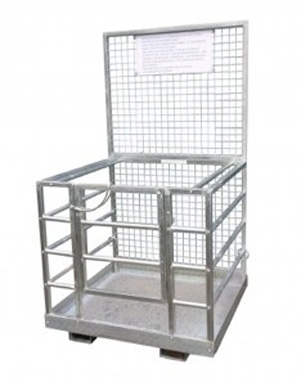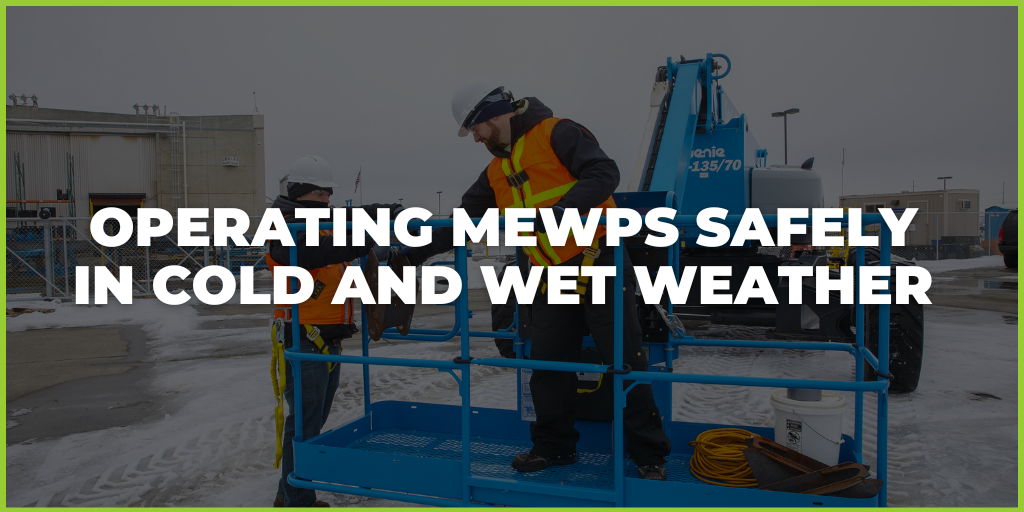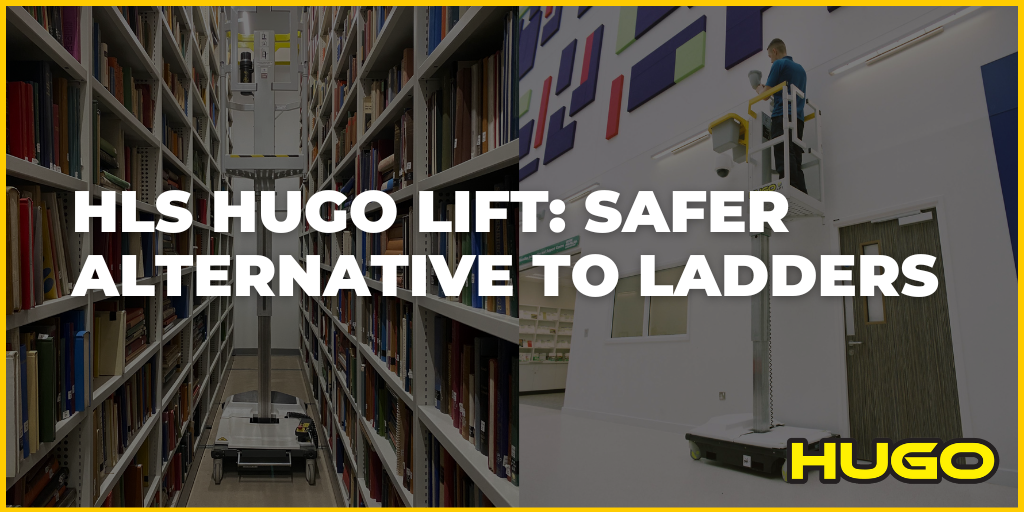When planning an activity that involves some aspect of working at height, it is vital to consider the safe method of getting a person to the area in which they need to work. Often when a company has a forklift truck onsite it seems that this is the easiest and perhaps cheapest method for lifting people to the work area. Looking at the Work at Height Regulations (2005) and more specifically the PM28 Guidance note on non-integrated working platforms on forklift trucks, we look at some of the considerations for and against this approach.
First: a useful definition from the HSE's website"Working platforms or 'cages' on forklift trucks are 'non-integrated', i.e. the forklift driver controls the movement of the truck including the cage. There are no controls in the cage to control the truck or cage movement.":
Are you using a forklift in your warehouse / DC / manufacturing plant?
Do you own a working platform for your forktruck to lift people to height enabling maintenance and/or recovery works?
What value does this solution provide for you, and how does the use of platforms on forklifts sit with current legislation and best practice? In this post we will refer to both The Work at Height Regulations (2005) and Guidance Note PM28 [3rd edition] December 2005, both published by the UK Health and Safety Executive, and both available for download from our website (click here).
We talk to customers every day who are looking for an alternative to using their forklift for both routine and occasional lifting of people to carry out work at height. But what are their reasons behind looking for an alternative, and what value judgements are involved in selecting a suitable method for working at height?
There are two main factors that influence our customers when looking at working at height:
- Productivity / efficiency (including cost effectiveness)
- Safety
Our mission at HLS is to show that these two influencing factors can work alongside each other; to demonstrate that often the safest option is also the most efficient and productive.
Let's consider the option to use the company forklift with a working platform attached:
Forklifts are often very heavily utilised, so the first consideration is the work that will be put back if the forklift is taken away from its usual tasks, to assess the value of this option you have to understand what effect not loading that truck on time, or not picking your pallets on time will have on your productivity and what knock-on effect that will have on your customers?
The second consideration is the number of people you need to complete the task; one person in the basket completing the work, and also the forktruck driver to operate the machine and remain present while ever there is a person in the platform - what does it cost the company to divert two people to a non-productive task, and how much time will it take to complete?
You also need to consider how safe it is to put a person into / onto a platform mounted to a forktruck. This is where the company really do need to be aware of the The Work at Height Regulations 2005 and HSE Guidance Note PM28. The Work at Height Regulations (2005) places a duty on employers, the self-employed, and any person who controls the work of others, to select the most suitable work equipment for the task to be carried out.
PM28 helps guide employers as to when a forklift platform would meet the requirements of The Work at Height Regulations. If the task to be completed is a planned or routine one (e.g. maintaining lighting tracks, routine cleaning etc.), then a working platform on a forklift truck is not allowed; full-stop. There is always a more suitable option for these tasks!
In the case of occasional or emergency tasks the working platform method can sometimes be permitted, and that is when the PM28 guidance needs to be consulted. In order for a working platform to be mounted to a forklift truck for the purposes of lifting a person, PM28 states that you need to:
-
Select a suitable truck, ensuring it has adequate capacity, that the platform can be secured correctly, that the person in the platform has no access to moving parts of the FLT, that unsuitable movements can be disabled while the platform is attached.
-
Ensure that the truck operator remains at the controls while ever the platform is elevated.
-
Ensure that a communication strategy is in place between the operator of the FLT and the person in the platform.
-
Ensure that the FLT is not driven while ever the platform is raised.
-
Ensure that restraint lanyards and harnesses are used appropriately.
-
Ensure that any users of the platform have been fully trained.
This list is not exhaustive; there are many, many more considerations suggested in PM28.
So the question shifts to: Is it ever the safest or most cost-effective solution to use a non-integrated working platform on a forklift?
And the answer really is "probably not". To fulfil all of the requirements of PM28 requires both management time, and exacting equipment specifications. Either owning, or hiring in a suitable MEWP, scissor lift, cherry-picker, or personnel lift will nearly always prove a safer and more cost effective alternative; using fewer people, less time, and without unduly impacting on your site's productivity.
What do you think? Is using a working platform on a fork-truck ever the best option?





